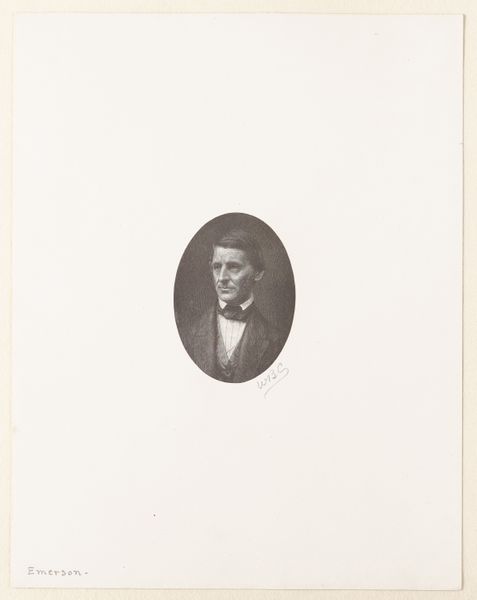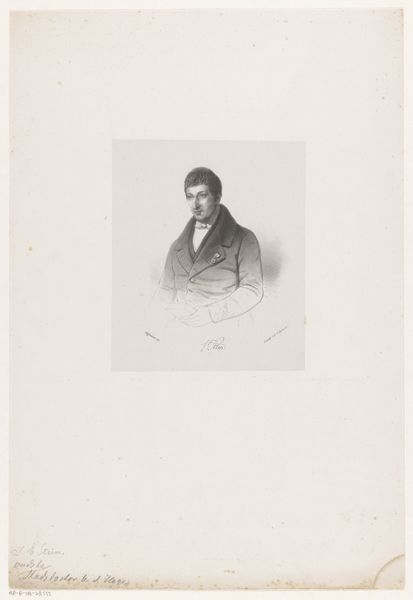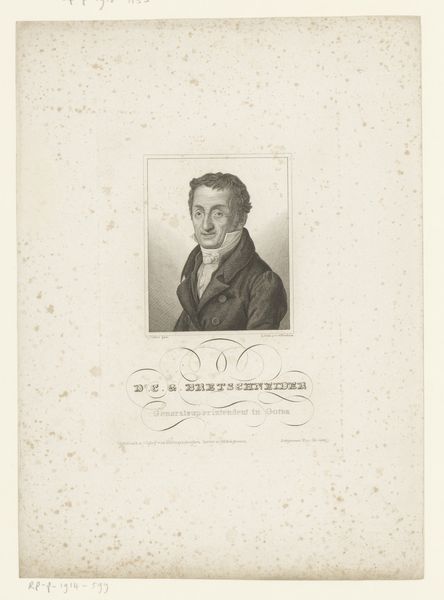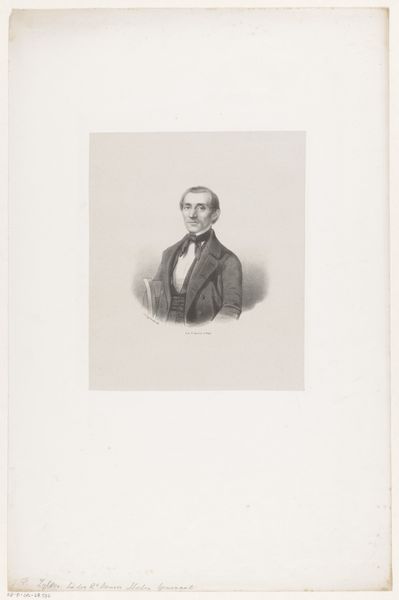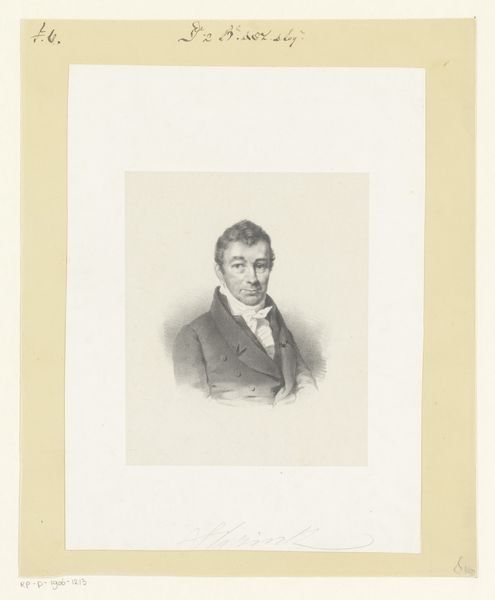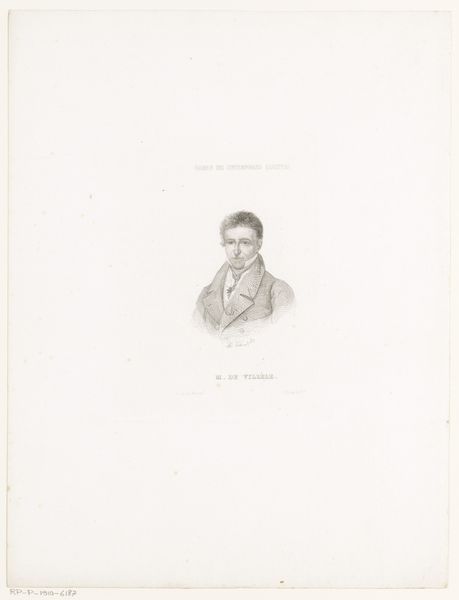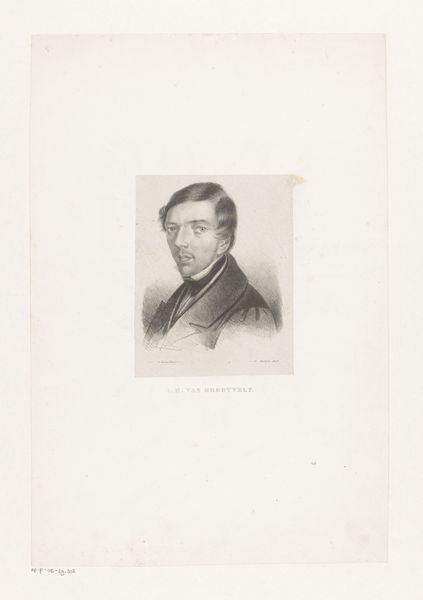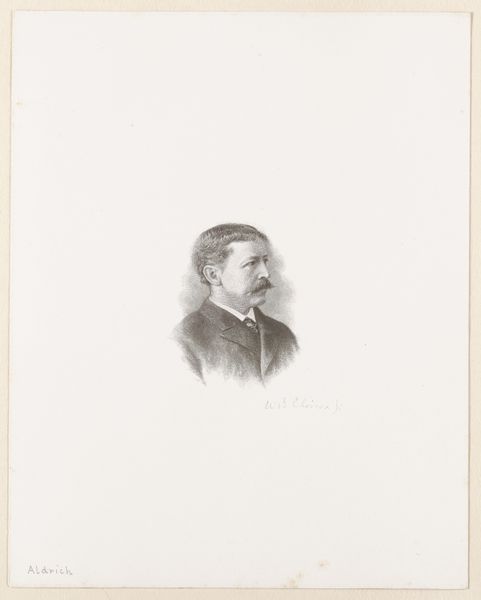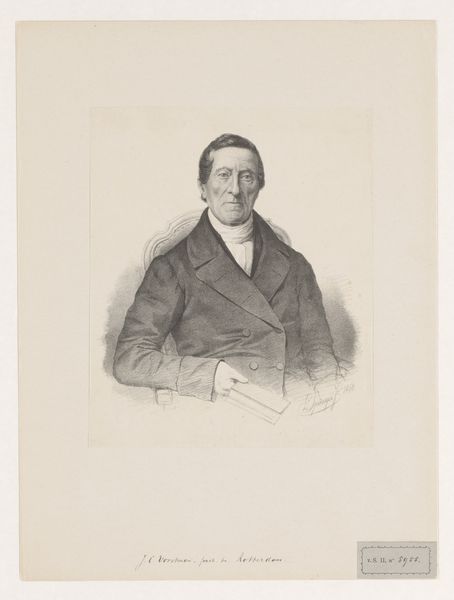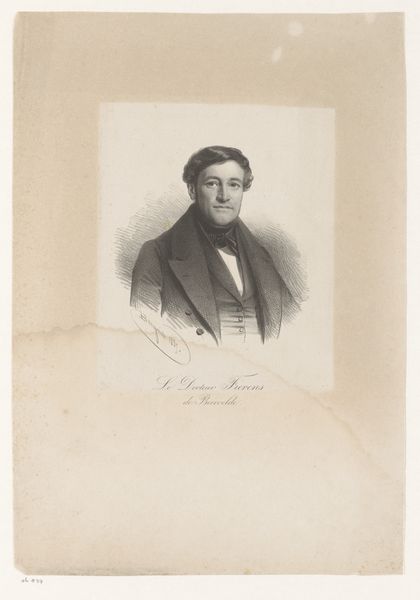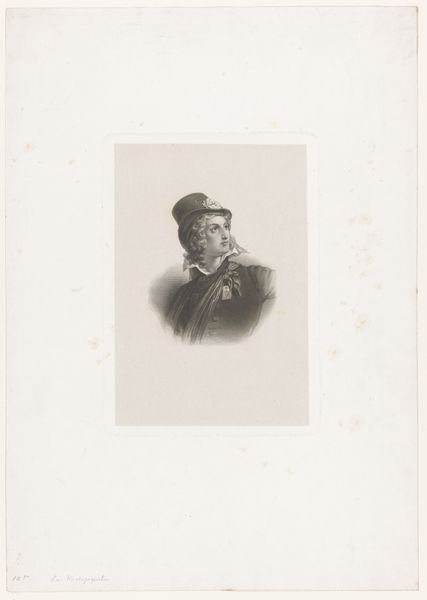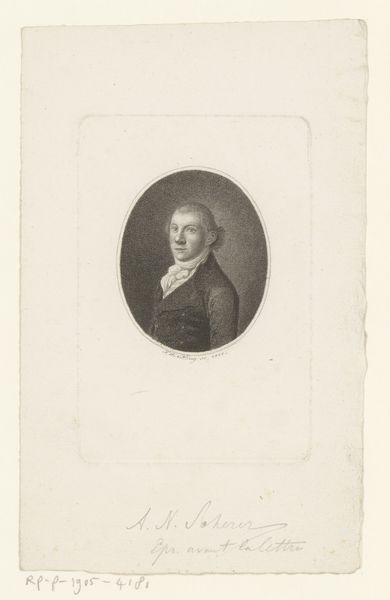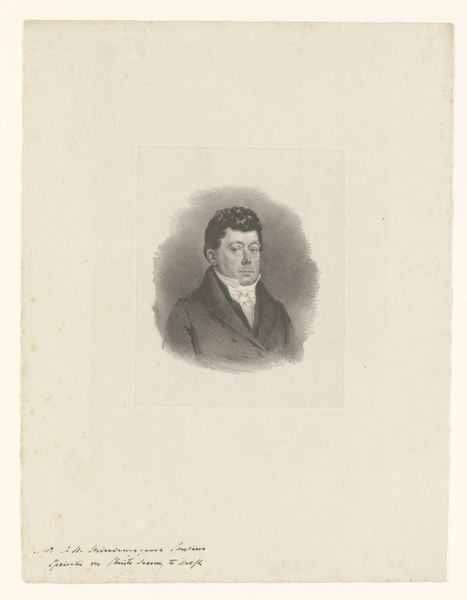
Dimensions: height 236 mm, width 170 mm
Copyright: Rijks Museum: Open Domain
Editor: This is "Portret van een man, mogelijk Baguet," a pencil and graphite drawing dating from 1831 to 1900 by Jean-Baptiste Meunier. There's something so delicate and haunting about it. What do you make of this piece? Curator: The interesting question here isn't just who this is, but who Meunier *intended* him to be, and how that resonates with the public perception of powerful figures at that time. The period is crucial - it situates the work within the rise of bourgeois society and evolving portraiture conventions. The image is carefully controlled, despite the fragility of the medium. Editor: Carefully controlled? Curator: Note how the bust is centered, carefully cropped, sharply in focus. And think about where such an image might circulate – as an engraving reproduced for public consumption. It lends an air of authority. Is it earned? Imposed? How do we *read* that in the sitter's expression and demeanor, and how is it reinforced, or contradicted, by the method of display? Editor: So you’re saying it's about more than just capturing a likeness, but about shaping a public image. Curator: Precisely! The light touch of the pencil suggests accessibility, perhaps even vulnerability, yet the overall composition screams “importance." Was this person truly significant or merely posturing? Consider how the institutions exhibiting these works shaped social hierarchies. Editor: That's a fascinating perspective; I hadn't considered how much the historical context influenced the reading of a simple portrait. Thanks for helping me understand this. Curator: Indeed. Considering the political climate adds layers of depth. Thank you for prompting this interesting discussion.
Comments
No comments
Be the first to comment and join the conversation on the ultimate creative platform.
